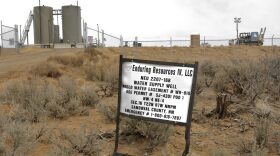Jerry Redfern, Capital & Main
Visual journalist Jerry Redfern covers the environmental and humanitarian issues across Southeast Asia and other developing regions, as well as at home in the US. His work ranges from the aftermath of American bombs in Laos to agroforestry in Belize to life amid logging in Borneo. Jerry’s photos have appeared in The New York Times, Wall Street Journal, Forbes, and Der Spiegel, among others. He has contributed to four book projects, including Eternal Harvest: The Legacy of American Bombs in Laos (co-authored with Karen Coates), which was a finalist for the IRE Book Award.
After graduating with a degree in journalism from the University of Montana, he spent several years as a staff photographer at newspapers in the American West. He began his freelance career in Cambodia where he shot news, features and investigative stories for Agence France-Presse, The New York Times, The Cambodia Daily
and other publications. These days he works with video as well as
photos, and he is in the final stages of post-production on his first
feature-length documentary film, Eternal Harvest, an extension of the book project.
Jerry was a 2012-2013 Ted Scripps Fellow in Environmental Journalism at the Center for Environmental Journalism at the University of Colorado at Boulder and a Senior Fellow at the Schuster Institute for Investigative Journalism at Brandeis
University.
-
A warming climate — fueled in part by the state’s oil and gas production — has parched rivers and turned forests to tinder.
-
Pipeline company touts helping the nation; letter writing campaign raises questions. Critic says, “Just pipe the natural gas.”
-
Legislators juggle hundreds of bills. Some would shape the industry that generates money, pollution and climate disasters.
-
Trump election likely marks the end of a federal response to worsening air pollution in the Permian Basin.
-
The data is clear: The village of Loving in the Permian Basin has been hit hard by waves of pollutants from Big Oil, yet the EPA hasn’t acted to force a cleanup.
-
With the EPA hamstrung by the Supreme Court and shaky state funding, New Mexico could face a future with reduced protections.
-
Despite efforts to rein in emissions, state is unlikely to meet greenhouse gas reduction goals, group says.
-
An oil and gas firm planned to convert a New Mexico water well into a disposal site for toxic wastewater. A familiar face stood in its way.
-
But a tax break for low-producing stripper wells gets slipped into a package with green energy breaks.
-
Developers tout hydrogen as aclean energy source; Navajo opponents say it is another way outsiders will profit by harming their environment and health.










